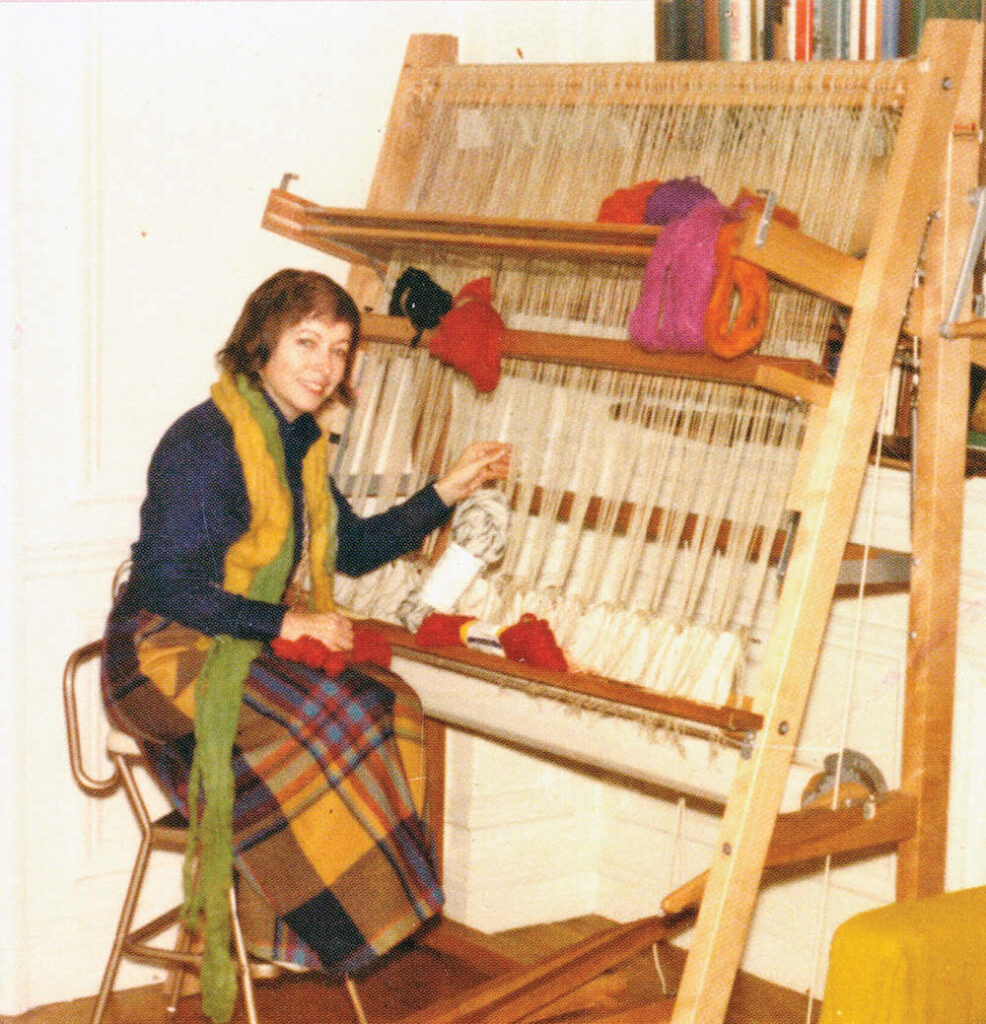
(Courtesy of Yeshiva University) Five larger-than-life tapestries woven by Shoshana Comet, a Holocaust refugee turned psychotherapist, tell the story of her harrowing escape from the Nazis as a Jewish teenager and her spiritual transformation from victim to victor. Yeshiva University Museum’s new exhibit, running through Nov. 3, uses these tapestries to explore Holocaust history and trauma, psychological repair and affirmation of life.
Comet helped transform trauma therapy, first by converting her own experiences into creative expression, and then in her practice as a psychotherapist. In this process, she helped change the way Holocaust survivors were perceived and supported; she rejected the prevailing victim model and instead embraced a positive approach, recognizing the dignity, resilience and spiritual and moral strength of those who survived and built new lives.
On the morning after Hitler’s invasion of Belgium in 1940, 16-year-old Comet, her parents and four sisters fled their home in Antwerp.
Leaving everything they owned behind, the family crisscrossed the countryside of France by train and on foot, hiding in barns and ditches, cowering from German Stukas and bombs dropped from the sky. The family’s chilling near-misses were many. Jumping from an exploding train. Escaping a roundup by collaborating French police. Stopped by a French policeman who claimed Comet’s father’s tefillin were a secret radio.
Eventually, after a year on the run, the family reached neutral Portugal, where a sympathetic American consul gave them visas to enter the U.S. In 1941, they boarded an African freighter for New York, one of the last boats to the U.S. before America entered the war.
In 1952, Shoshana married Ted Comet and the couple had two children. Although her family survived, Comet shared very little of her wartime memories with her children.
Then at the age of 40, out of the blue, she bought a loom and began weaving. “I was stunned by what she created,” said Ted Comet, an American Jewish community leader whose long career focused on Jewish rescue, relief and reconstruction. “I expected pillows for the sofa.” Instead, the three-dimensional tapestries were bold and beautiful representations of Shoshana’s repressed memories and expressions of her inner struggles — with God, suffering, loss and eventually, hope and healing. She herself didn’t initially realize what was happening.
“In her first two tapestries she’s experimenting with her art, and then it’s as if all the survival and the trauma that was inside her poured out,” explained Ilana Burstein Benson, the exhibition’s curator.
Indeed, while working on a tapestry called “War,” Shoshana’s right arm became paralyzed. Doctors could find no physical cause for the problem, so she entered psychotherapy. She discovered that her weaving was surfacing memories that were so painful that she subconsciously self-paralyzed her arm in order to prevent herself from continuing. Once these memories had been worked out in therapy, her arm regained its use. She also lost her fear of flying. Having seen German Stukas strafing train passengers on her train journey through France in 1940, an airplane to Shoshana was not a vehicle of transportation — it was an instrument of death.
“Shoshana Comet’s journey and her art are a celebration of life and of victory over adversity,” said Karen Bacon, associate vice president for academic affairs at Yeshiva University. “As the flagship Jewish university, YU is proud to present her story and her legacy. The exhibition is an example of Yeshiva University’s commitment to Holocaust research and education.”
In addition to showcasing Shoshana’s art, the exhibition serves as a history lesson, offering a glimpse into the lives of Jews in Western Europe during the Holocaust. Over 66,000 Jews lived in Belgium when the Nazis occupied it in 1940; 34,801 were imprisoned or deported and 28,902 were murdered.
The exhibition features a map of Western Europe, marking the family’s odyssey. It’s also an introduction to the Holocaust, especially for younger students. “There are no pictures of concentration camps because that’s not this family’s story,” said Burstein Benson. “It’s a personal story of survival through thoughtfulness, caution, planning and luck, offering a slightly different perspective on the Holocaust.”
After Shoshana’s death in 2011, her husband, Ted, now 100 years old, began hosting tours in his apartment to showcase and discuss her tapestries. The vibrant red, green, orange, yellow and black threads symbolized how she transformed her trauma into creative energy. “Everybody has trauma,” Ted said. “But we also have more resilience for coping with it than we realize.”
Upon completion of her fifth tapestry in 1969, “Affirmation of Life,” Shoshana walked away from her loom, never to weave again. Instead, she trained to become a psychotherapist, working with Holocaust survivors and their families. When asked why she gave up art, Shoshana replied, “I didn’t. Being a good therapist is more an art than it is a science.”
To attend the exhibition, go to the YU Museum at 15 West 16th St., New York City, located at the Center for Jewish History. The exhibit is free and open to the public Sundays-Fridays.
For more information or to request a guided tour, email [email protected].
This exhibition was made possible with assistance from the Conference on Jewish Material Claims Against Germany, and supported by the Foundation Remembrance, Responsibility and Future and by the German Federal Ministry of Finance.












